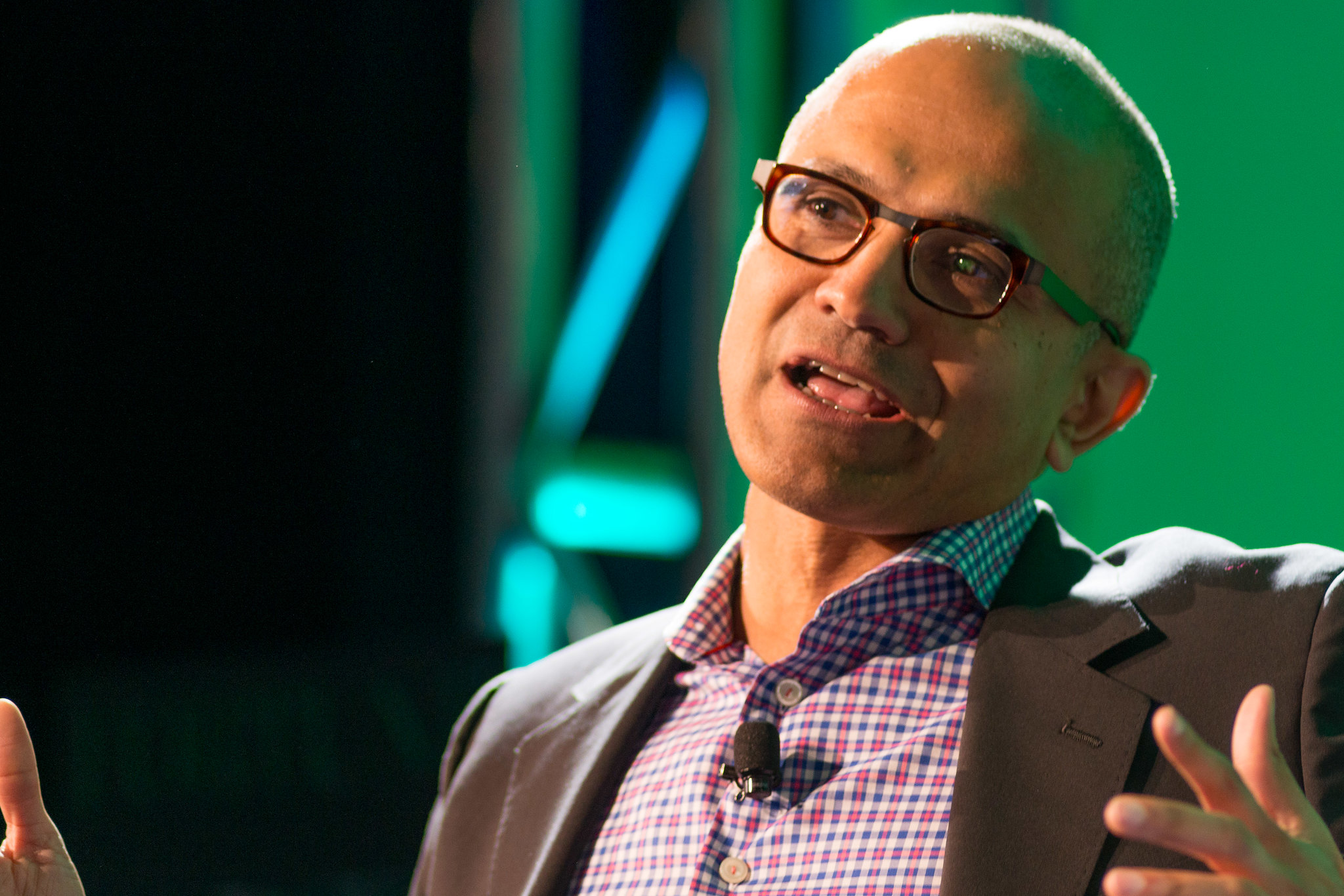 CLOUD
CLOUD
 CLOUD
CLOUD
 CLOUD
CLOUD
Microsoft Corp.’s stock recovered from an early slide and rose almost 3% after-hours following a fiscal second-quarter report that saw the company beat expectations on earnings and revenue.
The company reported net income for the quarter of $18.8 billion, up 21% from a year ago, coming to $2.48 a share. Total revenue rose 20%, to $51.7 billion, from a year ago. It was a strong performance, since Wall Street predicted Microsoft would report earnings of just $2.31 per share on revenue of $50.9 billion.
Microsoft Chairman and Chief Executive Satya Nadella (pictured) said the company was benefiting from the fact that tech as a percentage of global gross domestic product continues to rise. “We are innovating and investing across diverse and growing markets with a common underlying technology stack and an operating model that reinforces a common strategy, culture, and sense of purpose,” he said.
Microsoft’s stock initially fell in the minutes after its report was first published, with investors perhaps a little upset the company’s cloud business didn’t do better. The company said its Intelligent Cloud segment, which includes the Azure public cloud, GitHub and products such as Windows Server, pulled in revenue of $18.33 billion. That was just above Wall Street’s consensus of $18.3 billion, representing 25.5% growth.
Microsoft said however its revenue from “Azure and other cloud services” rose 46%. That’s better than the overall segment, but it was worse than the previous four quarters, where growth had been above 50%.
Microsoft’s hot streak in the cloud has cooled somewhat and investors will take notice of that, Forrester analyst Lee Sustar told SiliconANGLE. He speculated the slowdown could be the result of enterprises moderating their cloud service spending following the pandemic-driven upswing, or some enterprises might be simply hedging their bets with other cloud providers, embracing a true multicloud strategy
“Still, a 46% growth rate indicates that big consumers of IT infrastructure – both in the public and private sector – are taking a cloud-first approach to IT spending,” Sustar said. “That will continue to benefit Microsoft.”
Elsewhere, Microsoft enjoyed steady growth in its More Personal Computing segment. The business, which includes revenue from Windows, device sales, advertising and gaming, logged sales of $17.47 billion, up 15.5% and above the consensus estimate of $16.56 billion.
Microsoft said Windows license sales rose 25% in the fourth quarter, a seemingly decent performance at a time when Gartner Inc. reported that personal computer shipments were down 5%.
Microsoft’s Xbox hardware revenue inched up 4%. Its gaming business now represents more than 11% of the company’s total revenue, perhaps underscoring why Microsoft was so keen to spend $68.7 billion to acquire the games maker Activision Blizzard Inc. during the quarter – its largest deal ever.
On a call with analysts, Nadella said buying Activision would help consumers play games wherever and however they want. The deal will effectively “shape the future of gaming,” Nadella said, without elaborating.
Holger Mueller of Constellation Research Inc. said the acquisition of Activision suggests that Microsoft has a strategy for its next level of growth in the making. “The company is in good shape with all key performance indicators up over 20%,” he said. “That’s not something investors from a few years ago would have expected to see from Microsoft in the 2020s.”
The other key segment of Microsoft is its Productivity and Business Processes unit, which includes Office, Dynamics and LinkedIn. The segment reported revenue rose 19% from a year ago, to $15.94 billion, just ahead of analysts’ forecasts.
Pund-IT Inc. analyst Charles King said Microsoft’s stock wobble was likely the result of a much broader swooning in the U.S. and global financial markets amid inflationary trends and ongoing supply chain woes.
“In other circumstances, the quarter-to-quarter drop in Microsoft’s revenues and Azure cloud services growth might have been shrugged off,” King said. “Despite these problems and challenges, Microsoft’s leadership across numerous business and consumer markets and its overall financial strength provides a much firmer foundation than many of its peers. That should help Microsoft maintain its footing until markets are back in balance.”
Microsoft had a busy quarter. Besides buying Activision, it also found time to launch Windows 11, the successor to Windows 10, and agreed to a deal to acquire AT&T Inc.’s advertising tech business Xandr Inc.
For guidance, Microsoft said it’s expecting third-quarter revenue of $48.5 billion at the low end and $49.3 billion at the upper end of its estimate. That compares well with Wall Street’s forecast of just $48.23 billion.
Support our mission to keep content open and free by engaging with theCUBE community. Join theCUBE’s Alumni Trust Network, where technology leaders connect, share intelligence and create opportunities.
Founded by tech visionaries John Furrier and Dave Vellante, SiliconANGLE Media has built a dynamic ecosystem of industry-leading digital media brands that reach 15+ million elite tech professionals. Our new proprietary theCUBE AI Video Cloud is breaking ground in audience interaction, leveraging theCUBEai.com neural network to help technology companies make data-driven decisions and stay at the forefront of industry conversations.